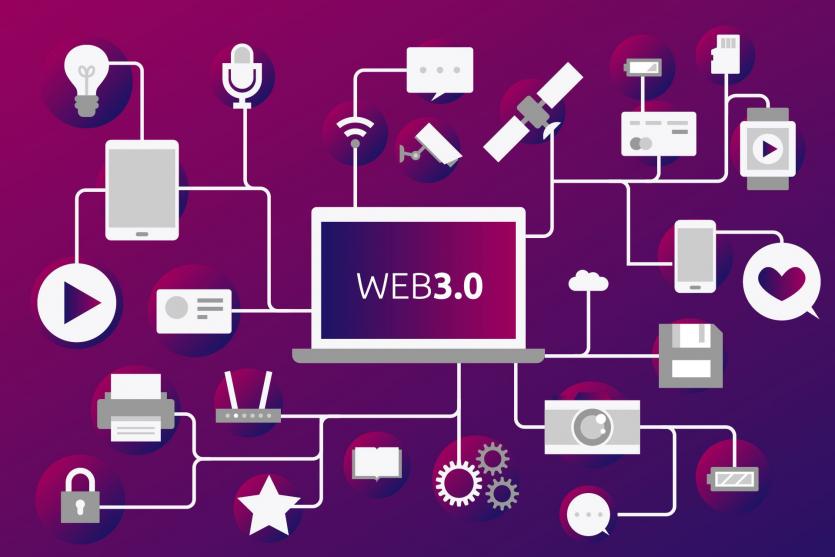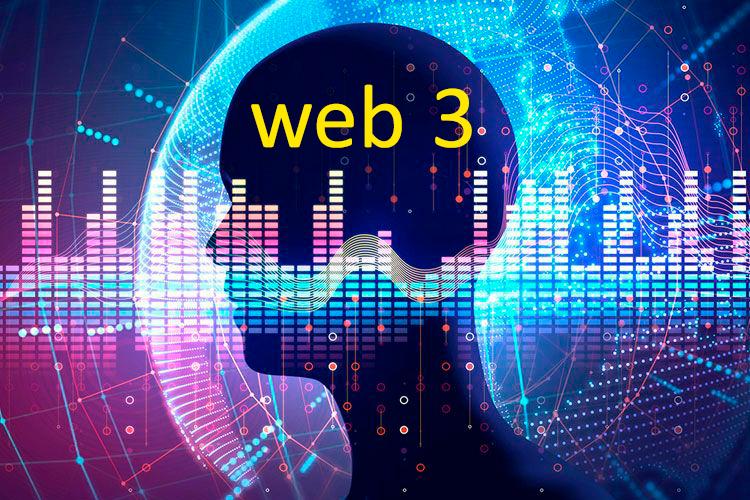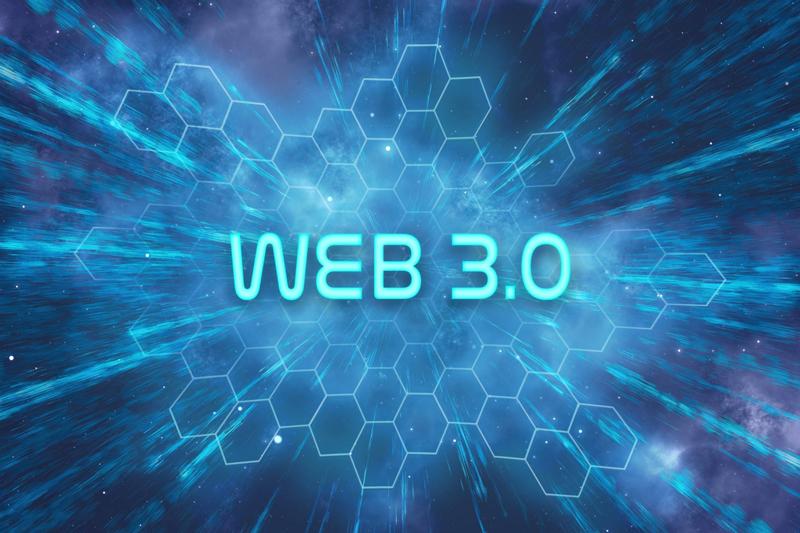What Impact Will Web 3 Have On The Future Of The Internet And The Web?
The Internet Is One Of The Greatest And Most Influential Inventions Of The Human Hand, Which Has Changed The Lives Of Billions Of People And Has Provided Many Opportunities For The Growth And Expansion Of Various Occupations.
Web 3, The early Web version was more like a newspaper where users could access information published by organizations and companies. With the advent of technology came the second generation of the Internet, which allowed users to produce and publish content just like organizations.
Most web applications are now the second generation, and Web 3 will redefine the Internet and evolve. Web 3 focuses on essential metrics such as security, speed, privacy, and high-quality Internet services.
Infrastructure based on new technologies
Web 3 is the next generation of the Internet with a decentralized structure. Web 3 uses new technologies such as Blockchain, Virtual Reality, Augmented Reality, Artificial Intelligence, digital currencies, and irreplaceable tokens to provide further services to users.
Simply put, Web 3 is the Internet of the people; Which means that people on the Internet and all its tools will create to make it easier for people to access services. To know why the web 3 Importantly, we need to look at the changes that have taken place in previous generations of the Internet.
The Internet is one of the most critical factors in the globalization of the economy and the expansion of the concept of e-commerce. Nearly the top 500 US companies topped the list of websites such as Forbes, based on the Web and the Internet. Online social interactions are another area where the Internet has significantly impacted their emergence and expansion.
Before the invention of the Internet, most people’s social relationships were limited to the geographical area in which they lived, but the Internet removed these restrictions; Today, users residing on different continents can communicate with each other most simply.
What is Web 1?
As mentioned, the Internet has revolutionized people’s lives. To understand the potential benefits of Internet 3, we must first take a look at the capabilities offered by Web 1 and Web 2. Web 1 is the first generation of the World Wide Web, where content producers were scarce and most large corporations did. Most people in the first generation were Internet users, and companies published user information.
In Web 1, personal web pages were available in blog form that was static and built on free web hosting services. In this generation, users had no communication, and communication was limited to the producer and consumer pattern. It caused the growth rate to be prolonged during this period, and the information updating of the websites ran slowly.
What is Web 2?
The first generation of the Internet focused on the activities of companies, or more was owned by companies, and ordinary people had no role in its development and improvement. Web 2 made great strides, allowing users to create content on websites for the first time. One of the most important features of Web 2 was the interaction and collaboration of users with each other, so the term social and collaborative Web to describe Web 2.
Web 2 is the Internet we use now. Like Web 1, large companies still control Web 2. These companies allow people to communicate and share information but enable users to share their data.
To take advantage of the features of the second generation of the Web, you must accept the companies’ rules, and these companies, based on their policies, consider themselves allowed to restrict the activities of users on their platforms.
The most important features of Web 2 are the emergence of dynamic web pages, the dissemination of information from the server and client, reading and writing on the pages simultaneously, and more focus on users.
In Web 2, most of the changes in the appearance of the Web or the frontend occurred, and there were not too many fundamental changes in the design or development of websites and applications.
Web2 provides users with various online tools and infrastructures to share their views, opinions, and experiences with others. These programs have an interactive approach and allow users to be active. Facebook and Instagram are the most popular affiliate platforms.
In Web 2, users can publish text or multimedia information, communicate with others, express their opinions on various events, and engage in business by building their website or user page on social networks.
However, Web 1 and Web 2 have significant drawbacks. The most important disadvantages of the 1st and 2nd generation Internet are companies ‘ownership of user information, the possibility of censoring and deleting user information, restricting or making it impossible for users to operate on a platform, selling user information, and violating users’ privacy.

What are the features of Web 3?
While Web 2 continues to grow and most businesses do business in this context, the first signs of Web 3 growth can be seen in Internet applications. Web 3 was first introduced as the Semantic Web by Internet inventor Tim Berners-Lee.
Burners refer to the Internet as an Internet in which different characters are meant for the Web. With it, the interaction between users and machines is better than before. Although this feature can be considered as one of the features of Web 3, it is not its main feature. Among the features of the Web 3 index are the following:
Open Source: Web 3 projects are built on open-source platforms by developers, so they are free to use and can be developed by anyone worldwide.
Trustless: In Web 2, trust is exercised between different individuals and organizations through intermediaries, but in Web 3, the system provides the conditions for individuals to carry out their activities without intermediaries without the need for trust. Do the opposite. Of course, the term “no need for trust” is a bit exaggerated because, ultimately, the Web allows people to interact with each other based on the policies offered by blockchain technology.
Permissionless: You do not need to obtain a license from a specific person or organization to participate in Web 3 projects. The presence and use of facilities in these projects are coded, and people can work in the network by following these rules.
Separate financial system: In Web 2 projects, direct economic activities are impossible, and individuals must seek help from intermediaries such as banks and financial institutions. Web 3 projects include network-specific token-based applications that can use for in-app payments. NFT is one of the actors in this section.
The sovereignty of the people: One of the most important features of Web 3 is independent, autonomous organizations. In Web 3 projects, the network is dominated by people. Using Decentralized Automated Organizations, people who have tokens for each network can submit their proposals for the development of a project or vote positively or negatively on proposals submitted by others. The implementation or non-implementation of a plan depends on obtaining a majority vote.
Privacy: Three people own their data on the Web, and they publicly disclose information. No person or organization can access or publish users’ personal information without permission in this space.
Such a project for the Internet is the coordination of activities and the creation of financial incentives in most sectors such as production, services, data, and content, which can solve significant problems in health, food, finance, and other areas.
What are the significant technologies underlying Web 3?
One of the most important components of Web 2 development was the emergence and expansion of mobile devices (smartphones). Continuous access to the Internet at any time and place using smartphones allowed users to do business outside the company. Although the development of Internet and mobile infrastructure technologies are influential in the emergence of Web 3, the leading technologies of Web 3 are as follows:
- Edge computing.
- It decentralized blockchain networks for data storage and transmission.
- Artificial intelligence.
The Impact of Edge Computing on the Web
Transfer important information to data centers. Edge Computing refers to a processing architecture that allows part of the information generated on various devices such as smartphones and the Internet of Things to be analyzed instead of transferred to data centers for on-site review and processing on IoT phones or equipment. The technology puts less traffic on servers, saves bandwidth, improves security and privacy, and speeds up tasks and communications.
Most calculations are performed on the computing hardware of smartphones, computers, home appliances, sensors, and the like for using this technology. The main application of this technology is in the field of the Internet of Things; Where different machines produce data, making it possible for humans to interact with objects and objects with objects.
This technology makes it possible to mechanize more activities. At Web 3, Without this technology, it would be impossible to manage and control the vast amount of information.
What is the role of blockchain and cryptocurrencies in Web 3?
A decentralized data network (blockchain) allows users to maintain data ownership. Through this infrastructure, users can keep their privacy and define the price and value of the data generated. In blockchain-based networks, cryptocurrencies implement a decentralized economic system that no longer has the problems of methods such as central banking.
Blockchain prevents the aggregation of information in the hands of companies and organizations, which has a significant impact on improving network security and performance. In other words, the blockchain provides a platform for implementing Smart Contracts and Decentralized Apps. These applications have all the features of the web 3And allow people to access various web facilities in a decentralized manner.
Almost all everyday applications of the Internet, such as financial infrastructure, social networks, browsers, music streaming infrastructure, and games, can be run in decentralized applications. While making Web-defined activities more secure and faster, Blockchain technology allows new projects to be built. It is what NFT offers.
The Impact of Artificial Intelligence on the Web 3
Artificial intelligence should be described as the most important and influential technology in Web 3 . Artificial intelligence and its sub-disciplines, such as machine learning, can obtain a great deal of information about human activity, thereby anticipating and taking proper action when necessary.
Using artificial intelligence in a decentralized data platform on the Web 3 can manage and analyze large amounts of data without the need for the intervention of a specific person or organization. Web applications become more targeted using this technology, and advertising takes an entirely personal approach.
Artificial intelligence and blockchain can work together to minimize the need for a centralized interface system in climate modeling and forecasting, drug design, materials testing, and formal contracts.

What are the significant benefits of Web 3?
The essential benefits of Web 3 are:
- Everyone on the network can use the network services and does not need permission from a specific person or organization.
- No one can restrict users’ access to the network.
- Payments are made using blockchain network tokens without using a centralized financial system.
- It is possible to build decentralized applications in any field on blockchain networks.
These features make Web 3 more decentralized but more secure than previous generations of the Internet, which is why it has come to users’ attention. However, there are still problems with the rapid development of Web 3.
What are the disadvantages of Web 3?
Despite the exciting advantages that Web 3 has, it also has disadvantages. Most of these problems are related to digital currencies and blockchain architecture. Web 3 must overcome these disadvantages to be recognized as the suitable alternative to Web 2. The most critical disadvantages in this regard are the following:
Scalability: The speed of confirmation and registration of transactions in the blockchain is low due to its decentralized nature. In a blockchain, for transaction information to be verified and recorded, it requires the influential role of all or part of the users to record transactions in the node general ledger. Blockchain scalability depends on the aggregation algorithm it uses.
User Experience: Interacting with blockchain applications is not easy, as most of these platforms involve various steps that require applications that require a wallet to work. Therefore, working with these infrastructures requires specialized training.
Accessibility: Most users do not currently have access to Web 3 applications. These projects have not yet been integrated into modern Web browsers, and extensive Web 2 companies are reluctant to deploy Web 3 unless their financial interests in Web 3 are met.
Lack of powerful blockchain project: For running Web 3, several parallel tasks must perform. Several influential projects support decentralized applications to interact with these applications most easily. In addition, users should be charged less. Currently, projects such as Atrium and Polkadot can become the mainstay of Web 3, but they are still slower than Web 2. Extensible projects like Solana, which are fast-paced, are primarily focused.
Legislative Problems: The implementation of Web 3 on a blockchain and decentralized basis has caused problems for legislators. For this reason, identifying criminal activities on Web 3 and collecting taxes from individuals are two critical public issues for governing society and the country. It is natural in such a case that governments do not allow these projects to grow. In the long run, users may fall victim to online scams due to lawmakers’ lack of solid support. For this reason, utterly free space in the blockchain may not be in the public interest.
Architecture and Internet Services
The lack of access to a stable connection exists in most countries. Despite the slogans and the large sums of money they receive from users, large Internet service providers do not provide the right services. Projects such as Andrena and Althea are social networks in which people offer and connect to the Internet for others.
These projects are trying to circumvent Internet service providers. For example, a homeowner can invest in one of the Andrena project hotspots, making neighbors connect to the Internet. Neighbors also pay a fee to the owner for the Internet they receive, which is less than what they pay to service companies.
The domain is one of the essential parts of Internet services. Blockchain networks like Handshake and companies like Unstoppable Domains are looking for a new definition of a domain name system that converts an IP address into a human-equivalent web address. Currently, domain name registrations are performed by organizations such as Verisign and ICANN.
DNS control companies are large multinational corporations that control everything. The decisions of these companies are indeed in the best interest of the people in most cases, but sometimes decisions are made that are not very objective. Exclusive control over IP address management, content manipulation of various sites, and domain name ban are some of the problems of these centralized systems.
Data storage and processing for profit
Twitter allows users to download data. Users can access and monetize valuable information by downloading and analyzing data. Large companies are well aware of the value of data, and for this reason, most of them do not make the data collected in their systems available to everyone. When making money from data analysis by a user is hard work, businesses can do it without any problem and make huge profits.
Organizations such as Ocean Protocol, Streamr, and Numerai are looking to implement protocols to build an open-source data marketplace where users can share and monetize their data. Data is not yet fully streamlined, as most are proprietary and highly sensitive.
New Web 3 protocols provide users with tools that they can use to share sensitive data, accurately price and sell proprietary data. Converting data into asset tokens enables data valuation for the data owner, leading to a robust data ecosystem.
Another data and information domain component is its storage on central servers. In Web 2 applications, information is stored on corporate servers that are not compatible with security and privacy. Decentralized data storage and web hosting services such as Arweave, Sia, and Filecoin work on decentralized, decentralized, and secure data storage applications.
last word
Web 3 expands the scope and scale of human-machine communication beyond currently thought. Web 3 makes it possible to interact with different people or machines in the world without the use of companies or interfaces that are costly. These interactions include seamless payments, secure data transfers, and the flow of valuable information to a wide range of potential users worldwide. This paradigm shift leads to new businesses that were unimaginable in the past.
These include global cooperatives, decentralized independent organizations, and independent data markets. On Web 3 Using irreplaceable tokens, people can buy or sell products, goods, or services in a new way. With this description, we see that the scope of Web 3 influence is something beyond cryptocurrency projects. If realized, it will provide people with a whole new global communication infrastructure more efficiently.

